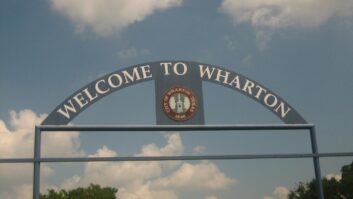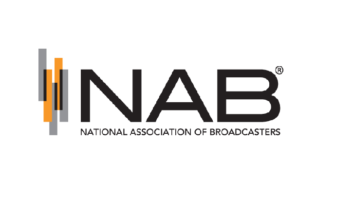My name is Matthew Wesolowski. For the past 15 years or so, I have been the owner and general manager of “Matt’s Classic Diner,” located in Franklin City, USA.

iStockphoto/Jodi Jacobson
A while back, our loyal patrons started calling it “Matt’s Class A Diner” — not sure why, but the name stuck. I’d like to think that it is because of the “Class A” service that we provide to our community, as well some neighboring towns whose residents happen to like our fare. I have always loved running the restaurant and those patrons we serve.
Franklin City is a beautiful mid-sized town with lots of other great restaurants. A few are “Mom and Pop” stand-alone joints like “Matt’s Class A,” though most here are the much larger national brands, like Alpha-bee’s and T.G.I.Heart Friday’s.
Other establishments are a little tougher to peg, like our local Cracker Barrel Store, or “CBS,” as we call it here. I often wonder if CBS is in the restaurant business or old-time country store business … or if they even still want to own restaurants.
Either way, those in the industry here claim that Franklin City has way too many restaurants for a town of its size; but until recently, my attitude has been, “the more the merrier.”
THE CITY COUNCIL AND US
Nearly all of the restaurants cooperate well with the local government: the Franklin City Council. The FCC has taken a great interest in food service in our community lately, especially within the past year. Right now, the FCC is trying to keep Long Wave Silver’s pirate-themed restaurants from coming here. The FCC has also offered to send out groundskeeping crews to help local restaurants in our weed-whacking efforts, as some choking plants have started to take over our parking lots, making it difficult to serve the public.
Many, though not all restaurants here, are members of the Nutrition Advisory Board. The NAB will accept membership dues from any restaurant, but most times, I get the impression that companies like Alpha-bee’s and T.G.I.Heart Friday’s control most of what goes on there. For instance, there was the recent effort of the Locals Partial to Frankfurters Movement, who advocate low-cost, independent, non-profit neighborhood hot dog stands. They wanted to increase each stand’s cart capacity from 100 hot dogs to 250 hot dogs. The NAB must have thought that the LPFM group offered too little nutritional value, as their widely-supported proposal continues to languish at the FCC.
All told, Matt’s has been a great business in an even better industry, even though I’ll never get rich from restaurant ownership and the “old timers” will never (ever) stop telling me about how wonderful things “used to be” in food service.
Up until a few years ago, however, I hardly would have thought that the Franklin City Council would possibly approve a Nutrition Advisory Board initiative that would cause so much harm to small restaurant operators, like “Matt’s Class A.”
THE FOOD TRUCK INVASION
In 2015, the NAB and FCC decided that it would be a good idea to flood the restaurant industry with thousands of new food service permits. Several years prior, a vocal band known as the Abandoned Meal-servers claimed that their outdated restaurants needed immediate help from the FCC. Most of these AMs were long-failing eating establishments, some of which had been shuttered for years (despite the tale told by their official FCC filings). It seemed as if the NAB and FCC needed to solve the problem as to why people no longer ate at the AMs’ places. The NAB and FCC came up with a plan to help the AMs: allow them to purchase and relocate mobile food trucks, so long as they were for sale within 250 miles of the community. The AMs knew that the food trucks would not have the same customer capacity or site security of more traditional restaurants, but at least it could potentially revitalize their failing businesses.
The FCC did place a few restrictions upon the food truck permits, such as limiting their menus to the exact same offerings as that of the parent AM’s restaurant. In some cases, however, they would be allowed to offer a separate menu at night if the main AM’s location was closed. The AMs also agreed that their trucks would have no ability to secure a license for a permanent location or menu origination, as that was against the FCC’s long-standing food truck ordinances. Otherwise, if a city block happened to be unoccupied, it needed a food truck.
On the surface, the NAB and FCC plan was reasonable: give the AMs a chance to open up food trucks to serve the community without affecting existing eateries. The failing AMs would be revitalized with access to thousands of new potential customers. Big restaurant chains like Alpha-bee’s and T.G.I.Heart Friday’s would only see negligible impact, as they already owned the best properties in high-traffic areas. The program seemed to be doing so well that the FCC even voted to allow AMs who were unable to purchase a food truck to just give them one.
Clearly, everyone was a winner.
SERVICE RECEPTION ISSUES
Here at Matt’s Class A, I started noticing that the Franklin City Council was allowing food trucks to park closer and closer to my small diner. Some of my fellow diner operators even had food trucks setting up shop in their parking lots! In many cases, the AMs had applied for food truck permits that plainly blocked the roads between licensed existing restaurants and their customer bases. The FCC said that many of those customers were somewhat distant anyway.
Despite further cries for help to the NAB, the small restaurant owners found it almost impossible to force the trucks to move. Worse still, when one truck did move, another would often take its place.
My long-time diner patrons started complaining about the difficulty in receiving good service from Matt’s Class A, even though it was not a problem several years ago. They said that the noise impact of the food trucks made it difficult to eat here, even though our menu was better than ever. Some of my most loyal customers threatened to eat elsewhere if the poor service reception issues did not improve. Several felt it would be better to cook at home with improved steaming technologies.
When I come into work every morning, I often think that the Franklin City Council and Nutrition Advisory Board really only care about the large restaurant operators, like Alpha-bee’s and T.G.I.H. Friday’s. The FCC and NAB also give lots of attention to the AMs and their food trucks, but show virtually no support for those of us in the middle, like Matt’s Class A Diner, who get squeezed on all sides without any hope for relief.
I wonder, will the FCC ever support those of us who operate restaurants in between?
HELPING SMALL DINERS
Several years prior to the Abandoned Meal-servers revitalization initiative, another diner owner and I had a chance to meet with the (now) chairman of the Franklin City Council to explain that, although our restaurants were very small, we often had unnecessarily large parking lots surrounding us. There was a FCC ordinance that stated that parking lots had to be big enough to ensure sufficient seating capacity for our customers, while at the same time being large enough to prevent our patrons from parking in the spaces of neighboring eateries. With that in mind, we presented a plan to the chairman to optimize the relationship between restaurant size and the amount of required parking spaces.
Our research studies showed that many diners could double our restaurant size without the need for additional parking spaces. Locations like ours were generally able to cater to 6,000 patrons per month, but with a minor FCC policy change, Matt’s Class A (and others) would be able to serve up to 12,000 customers each month.
We took the plan to the Nutrition Advisory Board, who said that they thought it was interesting, but ultimately decided to remain neutral on the nutritional merit of the plan. After all, the NAB needed to respect the wishes of Alpha-bee’s and T.G.I.Heart Friday’s, who had many locations already capable of serving 100,000 patrons.
After the FCC meeting, I contacted other diner owners directly. With facts in hand, I let those owners know if their restaurants could expand and invited them to sign a petition to the FCC indicating their support of the proposal.
All in all, 146 owners representing 655 total restaurants signed the petition. The proposal even had support of several AMs and many in the Locals Partial to Frankfurters Movement. With overwhelming enthusiasm from others in a similar position to “Matt’s Class A,” I expected 12,000-customer capacity restaurant expansion to take place sooner than later, with the FCC issuing lots of construction permits.
As of today, however, not one upgrade permit has been approved.
DEAR FCC
There are hundreds of diners just like mine that would be able to increase our customer capacity with a simple policy change. At 2016’s Nutrition Advisory Board convention, the chairman of the Franklin City Council announced his intent to explore the restaurant upgrade initiative further; yet a full year later, the FCC has not acted.
Small restaurants are under assault from all sides: from large chain operators, to AMs with food trucks, to those who have stopped dining out altogether and are steaming their own meals at home (or soon in their car, when technology allows).
If not now, then when will the FCC (or NAB) ever attend to the needs of the small restaurant operator, caught in between two very powerful lobbies, who consume all of your attention? Please approve the 12,000 customer upgrade proposal now. Without it, our restaurants may not be able to stay in business much longer.
Matthew Wesolowski is owner and general manager of WYAB 103.9 FM, a Class A FM station in Pocahontas, Miss. He is joint-petitioner in FCC rulemaking RM-11727, which seeks to create a new 12 kW “FM Class C4” allotment classification, as well as revise certain portions of Section 73.215. If approved, he said, several hundred FM Class A stations would be able to double their effective radiated power levels from 6,000 to 12,000 Watts.










